Down the halls in the Green Bank Science Center, visitors can see the Green Bank Telescope framed between the walls. As one walks closer to the atrium, the GBT gets smaller, not larger!
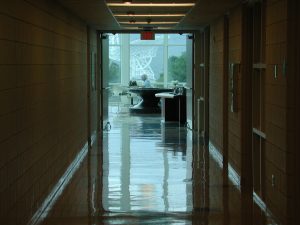

Giant in the Cage
At the Green Bank Telescope, astronomers can choose a variety of receivers to use to observe the radio skies. One of them can only fit up at the prime focus of the telescope. The cone at the left is the funnel entry into the feed of the receiver which is enclosed in a cage suspended on the end of the GBT’s 200-foot feed arms. It receives the radio waves bounced up here by the 100-meter dish of the telescope below.
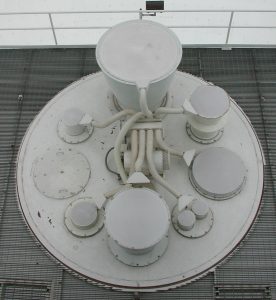
Looking Down the Revolver
The receivers of the Green Bank Telescope sit in a revolving cabin called the turret. The feed horns poke above the cabin, and their receivers hang beneath them in a suspended building that tilts with the telescope. When an astronomer wants to observe the longest wavelengths at the GBT, the telescope operator spins the largest horn into the beam of radio waves bouncing from the sub-reflector above the turret. The feeds are covered in a radio-clear fabric to keep debris and rain out, and blowers keep the fabric dry and free of obstructions.
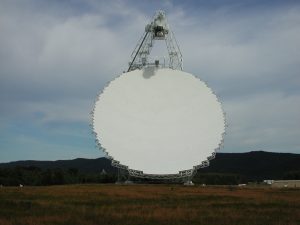
Clear Face of the GBT
The 2.3-acre dish of the Green Bank Telescope is the largest moving object on land. The telescope’s unique design places its receivers off the edge, at the top in this photo, to keep them from blocking incoming radio waves from hitting the dish.
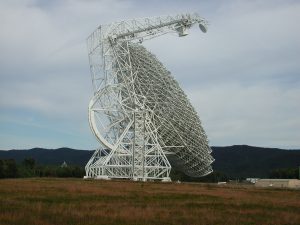
How Low Can It Go?
The Green Bank Telescope was designed to see 85% of the entire skies visible around the Earth. As in this photo, the GBT can dip extremely low to capture data coming from very southern sections of the sky, especially toward the center of our Milky Way Galaxy, where the GBT has found rich, complex chemistry.
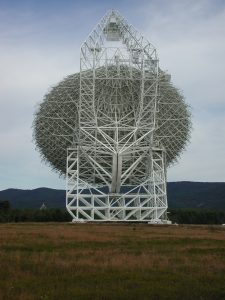
Symmetry in Steel
Over 13,000 steel beams support the world’s largest fully-steerable telescope in Green Bank, West Virginia. The Green Bank Telescope weighs 17 million pounds, and moves on a rotating base and a tilting gear. The two-armed yoke at the base of the GBT supports the tilting gear. And a gigantic arm attaches behind the dish to give it strength to tower over 200 feet above the surface.





